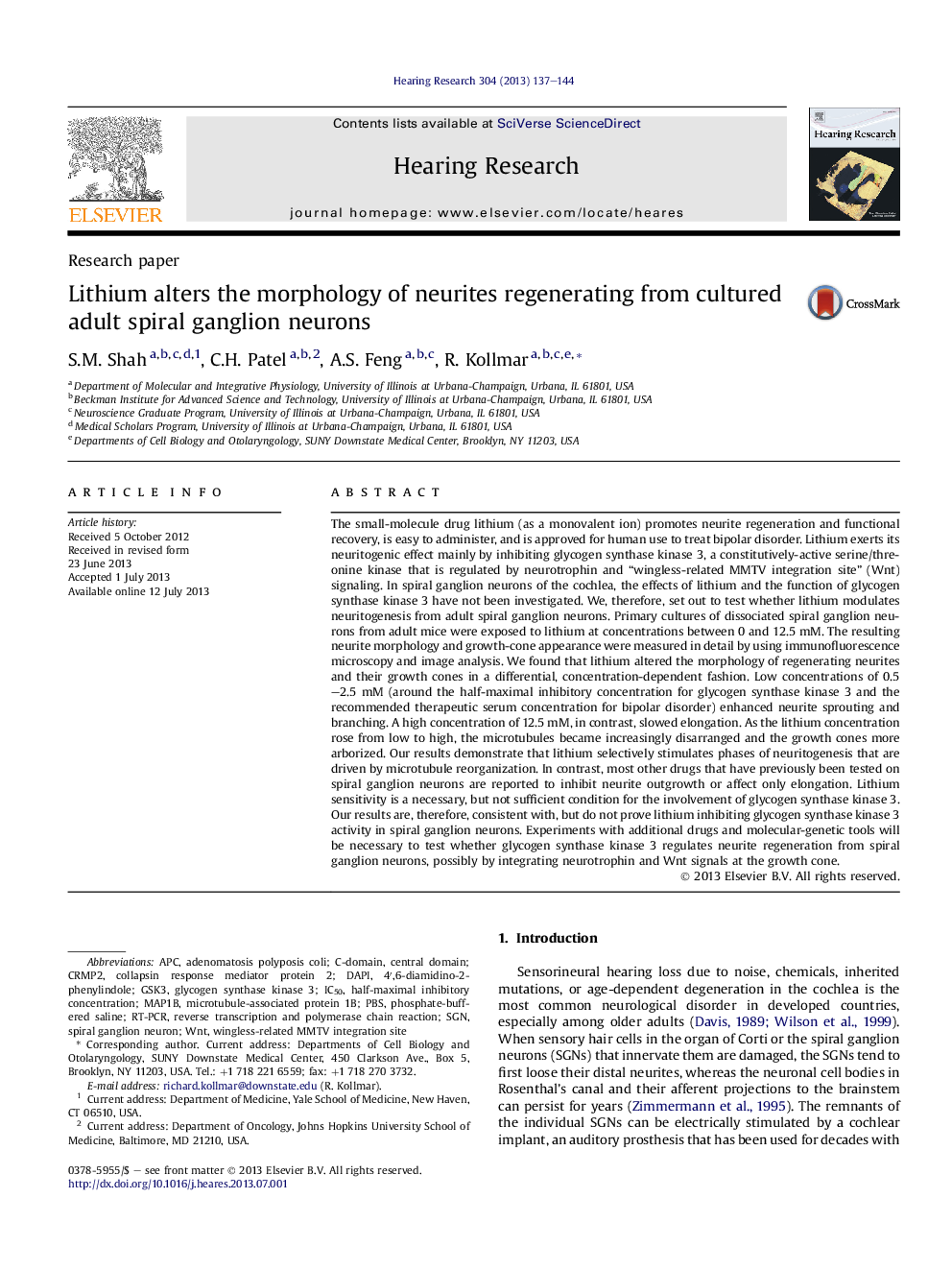| کد مقاله | کد نشریه | سال انتشار | مقاله انگلیسی | نسخه تمام متن |
|---|---|---|---|---|
| 6287498 | 1615596 | 2013 | 8 صفحه PDF | دانلود رایگان |
عنوان انگلیسی مقاله ISI
Lithium alters the morphology of neurites regenerating from cultured adult spiral ganglion neurons
ترجمه فارسی عنوان
لیتیم تغییر مورفولوژی نوری هایی را که از نورون های گانگلیونی مارپیچ بالغ رشد می کنند، تغییر می دهد
دانلود مقاله + سفارش ترجمه
دانلود مقاله ISI انگلیسی
رایگان برای ایرانیان
کلمات کلیدی
PBSIC50RT-PCRDAPIAPCSGNcentral domainGSK3WntMAP1BCRMP24′,6-diamidino-2-phenylindole - 4 '، 6-دیامیدینو-2-فنیلینولadenomatosis polyposis coli - آدنوماتوز پولیپوز کولیC-domain - دامنه Creverse transcription and polymerase chain reaction - رونویسی معکوس و واکنش زنجیره ای پلیمرازPhosphate-buffered saline - محلول نمک فسفات با خاصیت بافریspiral ganglion neuron - نورون گانگلیون مارپیچیhalf-maximal inhibitory concentration - نیمه حداکثر غلظت مهاریMicrotubule-associated protein 1B - پروتئین وابسته به میکروتوبول 1Bcollapsin response mediator protein 2 - پروتئین واسطه کلاپسین 2glycogen synthase kinase 3 - گلیکوزین سنتاز کیناز 3
موضوعات مرتبط
علوم زیستی و بیوفناوری
علم عصب شناسی
سیستم های حسی
چکیده انگلیسی
The small-molecule drug lithium (as a monovalent ion) promotes neurite regeneration and functional recovery, is easy to administer, and is approved for human use to treat bipolar disorder. Lithium exerts its neuritogenic effect mainly by inhibiting glycogen synthase kinase 3, a constitutively-active serine/threonine kinase that is regulated by neurotrophin and “wingless-related MMTV integration site” (Wnt) signaling. In spiral ganglion neurons of the cochlea, the effects of lithium and the function of glycogen synthase kinase 3 have not been investigated. We, therefore, set out to test whether lithium modulates neuritogenesis from adult spiral ganglion neurons. Primary cultures of dissociated spiral ganglion neurons from adult mice were exposed to lithium at concentrations between 0 and 12.5Â mM. The resulting neurite morphology and growth-cone appearance were measured in detail by using immunofluorescence microscopy and image analysis. We found that lithium altered the morphology of regenerating neurites and their growth cones in a differential, concentration-dependent fashion. Low concentrations of 0.5-2.5Â mM (around the half-maximal inhibitory concentration for glycogen synthase kinase 3 and the recommended therapeutic serum concentration for bipolar disorder) enhanced neurite sprouting and branching. A high concentration of 12.5Â mM, in contrast, slowed elongation. As the lithium concentration rose from low to high, the microtubules became increasingly disarranged and the growth cones more arborized. Our results demonstrate that lithium selectively stimulates phases of neuritogenesis that are driven by microtubule reorganization. In contrast, most other drugs that have previously been tested on spiral ganglion neurons are reported to inhibit neurite outgrowth or affect only elongation. Lithium sensitivity is a necessary, but not sufficient condition for the involvement of glycogen synthase kinase 3. Our results are, therefore, consistent with, but do not prove lithium inhibiting glycogen synthase kinase 3 activity in spiral ganglion neurons. Experiments with additional drugs and molecular-genetic tools will be necessary to test whether glycogen synthase kinase 3 regulates neurite regeneration from spiral ganglion neurons, possibly by integrating neurotrophin and Wnt signals at the growth cone.
ناشر
Database: Elsevier - ScienceDirect (ساینس دایرکت)
Journal: Hearing Research - Volume 304, October 2013, Pages 137-144
Journal: Hearing Research - Volume 304, October 2013, Pages 137-144
نویسندگان
S.M. Shah, C.H. Patel, A.S. Feng, R. Kollmar,
